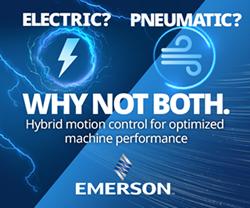Redefining Product Development Using Cutting-Edge 3D Metrology Solutions
Automating Back-End Processes in Advanced Manufacturing
Tips and Tricks for Implementing Automation in Your Manufacturing Plant
Philips' Lightbulb Moment: 3D Printing Becomes Essential Production Thinking
International Manufacturing Technology Show
Top 5 Reasons to Use Flat Cables Instead of Round
Service Bureau Business Doubles with Large Format 3D Print Capability
How to Dodge the Industry-Wide Knowledge Gap
Talking IMTS with Desktop Metal
Case Study: Buying Time with 3D Printed Tooling
New Laser Sources Improve Battery Performance by Enabling Dissimilar Metal Joining
Talking IMTS with Omron
How to Curb the Effects of Vibration on Mechanical Components
Talking IMTS with Heidenhain
Talking IMTS with Helukabel
Records 1201 to 1215 of 1776
First | Previous | Next | Last
Featured Product

